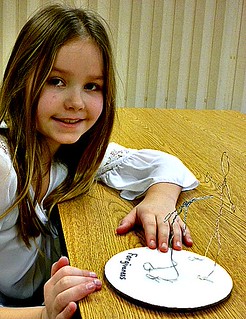I don’t know why, but this always amazes me. Really? God is still willing to take a chance with me? In spite of my crummy choices?
It’s not what I typically tell myself. My internal dialogue runs along the lines of…
- I can’t risk that. I might fail.
- I can’t do that. I’m not good enough.
- Who do you think you are, that people should do as you suggest?
But God keeps trying to help me replace this grinding, degrading voice. God reaches out to me, reminding me again and again, with a message of grace-filled love:
I’ll give you another chance.
Try it. I’ve got your back.
Hold my hand when you are afraid.
You are mine. I love you!
In our Rotation on the Parable of the Prodigal Son, we hear others suffer from wounding self-talk:
- The younger son was telling himself a story: “I am no longer worthy to be called your son” (Luke 15:21b).
- The older son also had a story: “All these years I’ve been slaving for you and never disobeyed your orders. Yet you never gave me even a young goat so I could celebrate with my friends!” (Luke 15:29).
Jesus shows us how God responds to these storylines:
It’s not about deserving; it’s about receiving.
Open your heart to receive my gift.
It’s all about grace.
Can grace guide us to counterclaim our hurtful head-chatter?
Perhaps you have heard it said during a Baptism:
![]() All this is God’s gift to us, offered without price. [1]
All this is God’s gift to us, offered without price. [1]
Grace is a free gift from God. There is no way to earn God’s forgiveness. Sins can’t “go away” by performing lots of good deeds to make up for the bad ones. Grace is God doing for us what we can’t do for ourselves. [2]
What story are you telling yourself?
Try changing the words you say to yourself; make it be your remade mantra.
God loves me no matter what. Can I treat myself the same way?
Grace isn’t only a truth about the way God operates; it transforms us. As we open up to God’s continuing offers of grace, we can find ourselves responding by becoming more Christ-like in character and conduct; more loving… even towards ourselves.

[1] The Services of the Baptismal Covenant are found in The United Methodist Hymnal.
[2] I don’t know who first said that but it sums it up nicely don’t you think?
Photo credits:
A delivered gift by LaughingRhoda, who licensed this photo on Flickr under a Creative Commons License.
Are you seeing ads? They are not from me! They are placed by WordPress, who otherwise offers a free platform from which to share lots of good-ness. If you see an inappropriate ad, please report it to support@wordpress.com. Include the URL, the date/time the ad appeared, and a screenshot of the ad.


 When we hear the story of
When we hear the story of 

